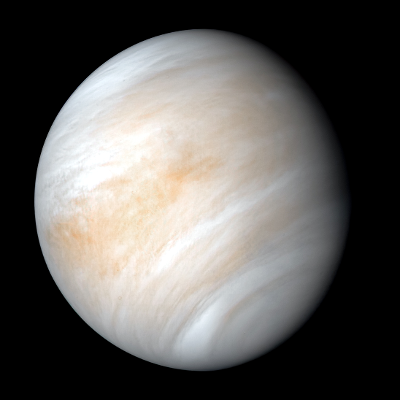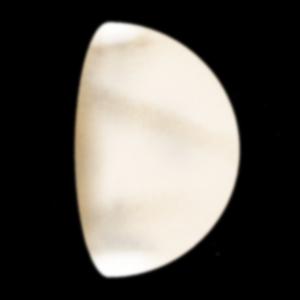
On Earth, phosphine is a direct product of biological decay, and so one possible explanation for its presence in the atmosphere of Venus is that it is being produced by some form of microbial life. The paper discussing their findings was published in Nature Astronomy.
So, have we finally now got real evidence for the existence of life beyond the Earth, or is the phosphine the product of some bizarre and exotic chemistry which occurs only in the upper atmosphere of Venus? Having read their paper, I am (for now) willing to accept the suggestion that it is the result of life but with the caveat that I would not be surprised if further investigations do reveal the phosphine to be the result of some unusual chemical process not involving life.
Phosphine is an interesting molecule – it is a phosphorous atom bonded to three hydrogen atoms; PH3. It should be pointed out that it has been detected in the atmospheres of Jupiter and Saturn. This is not that surprising nor does it detract in anyway from its presence in the atmosphere of Venus. The gas giants have hydrogen rich atmospheres and phosphorous is already present, moreover given the pressures and temperatures generated inside the atmospheres of Jupiter and Saturn it is easy to see how phosphine can be produced without the need for life.

As we narrow down the possibilities, we are really only left with the two options – either the phosphine is being generated by some obscure mechanism never encountered before, or else it has been generated by life. If life is the answer, it will need to be quite hardy. However, the fact that the phosphine was detected 30 miles above the surface – the only region where life could exist on Venus may also be significant. It would have to contend with the sulphuric acid present, but we already know certain types of bacteria live quite happily in pools of acidic hot springs on Earth. NASA has also found bacteria high in the atmosphere of Earth, so life in the clouds of Venus isn’t really so outrageous.
The next steps in the investigation are clear: we are going to need to send a dedicated mission to sample the clouds of Venus, it is the only way were are going to be 100% certain. In the meantime, you can find Venus in the morning sky. I made a drawing of it on the morning of the 14th September. Like many of us, I doubt I will look at our nearest planetary neighbour in the same way again.
Paul G. Abel
Director of the Mercury and Venus Section
| The British Astronomical Association supports amateur astronomers around the UK and the rest of the world. Find out more about the BAA or join us. |
